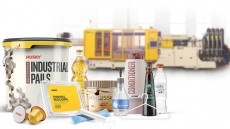Chilled foods minus synthetic preservatives: A ‘natural’ disaster waiting to happen?

Speaking to FoodNavigator-USA.com about the ongoing drive to avoid using synthetic preservatives, RFA technical director Marty Mitchell said: “Food safety is our number one priority, but couple that with demands to have low-cost product that stays fresh throughout its shelf-life and keep the ingredients list ‘all-natural’ and in my opinion, you’ve got a disaster waiting to happen.”
He added: “In these circumstances, it’s practically impossible to guarantee that you’ll have zero listeria and zero pathogens.
“Because we have safe and reliable [synthetic] preservatives we have managed to keep products safe throughout their shelf-life. But with the demand for all-natural, minimally processed products with an extended shelf-life, the potential for low-level contamination is raised."
The low scientific literacy of food marketers and consumers and a growing distrust of ‘mass-produced’ food and ‘chemicals’ meant that an increasing number of safe and effective substances were making it onto manufacturer and retailer blacklists, he said.
“There are some great natural preservatives out there from companies such as Danisco and Purac, but in general, we don’t have the same knowledge about natural products. They work in some products but not others and against some organisms but not others, so firms really have to know what they are doing when they use them.”
C. botulinum and listeria
In reduced oxygen packaged products in which clostridium botulinum and listeria monocytogenes were the organisms to watch, maintaining low temperatures from the factory to the consumer was also crucial, he said.
“But current distribution channels do not ensure the maintenance of the cold chain at 34-36˚F. Products still get terribly temperature-abused.”
And while novel processing technologies such as high pressure processing (HPP) presented promising solutions to the problem by enabling firms to avoid artificial preservatives and control pathogens, the costs made them prohibitive for many high-volume, lower-priced products, he said.
“By definition, HPP is going to remain somewhat niche.”
Time to bring the science back to food marketing?
Many technical managers were starting to tire of the ‘no chemicals’ brigade; he said. “Just because something is 'natural' does not make it safe, just as ‘local’ food is not automatically safer; it’s just that when people get sick at a local level, it doesn’t make the national news.
“But the drive for everything natural now has such momentum that I am really whistling in the wind.”
Natural solution?
The race to develop effective natural preservatives that can be used in ready-to-eat salads, fruits and cooked sliced meats - all of which are prone to the development of listeria, salmonella and E. coli – has been gathering pace in recent years.
Natural substances with antimicrobial action have been identified from a wide range of sources from oregano, rosemary, thyme, clove, cinnamon, green tea, mustard and garlic to micro-organisms from lactic acid bacteria and animal-derived substances such as lysozyme from egg white, lactoferrin in milk, chitosan from crustacean shells and pleurocidin from the skin of a fish called the winter flounder.
There has also been a lot of recent research on the ability of extracts of grape seed to tackle listeria and concentrates of wild blueberries and cranberries on a range of foodborne pathogens from E. coli and listeria to salmonella and staphylococcus aureus.
However, there were few natural antimicrobials that could be used as direct replacements for existing synthetic preservatives, said Mitchell, either because they were not as effective, were too expensive, or raised quality and regulatory issues.















